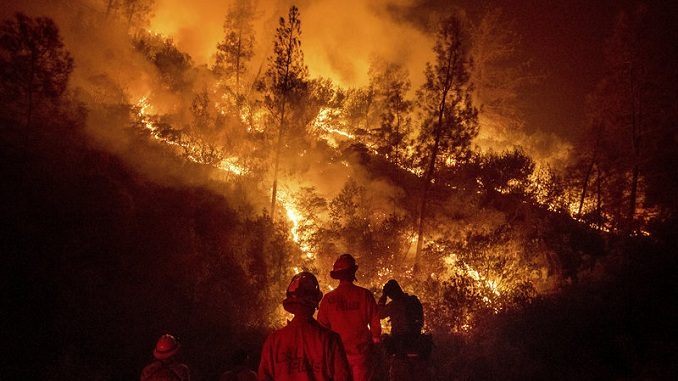
NASA is studying the effects of the Arctic wildfires in Alaska on the health of the people and the climate, using multiple methods, such as field and laboratory work, as well as satellite and airborne observations.
“Fires are a natural part of the ecosystem, but what we’re seeing is an accelerated fire cycle: we are getting more frequent and severe fires and larger burned areas,” Liz Hoy, a boreal fire researcher at NASA’s Goddard Space Flight Center in Greenbelt, Maryland, said in the statement.
Wildfires in the Arctic contribute to carbon emissions created by the burning of a thick, carbon-rich layer of soil, which additionally acts like insulation for the permafrost which is a frozen layer of ground that lies beneath the soil.
“When you burn the soil on top it’s as if you had a cooler and you opened the lid,” Hoy said. “The permafrost underneath thaws and you’re allowing the soil to decompose and decay, so you’re releasing even more carbon into the atmosphere.”
“Whether the fire-disturbed area will recover or go forward toward subsidence depends on how much ground ice is underlaying in the ground,” Go Iwahana, a permafrost researcher at the University of Alaska, Fairbanks, who also works with ABoVE, said in the statement. “Other factors at play are how severely the fire wounds the surface organic layer and the weather the burned area experiences after the fire.”
The wildfire is as well affected by these fires as they alter the distribution of plant species, the statement added. For example, there is one reindeer species which are native to the Arctic, Caribou, don’t recover easily after a fire as they rely on slow-growing plants for food.
“After an intense fire, we can see changes in the overall vegetation composition of the land,” Hoy said. “It’s going to change the mammal species that are able to live there and how people can use the land, for example, for hunting.”
ABoVE is also involved in launching a project to study the effects that these fires have on people’s respiratory and cardiovascular systems.
“Fires happen during the warm months when people spend a lot of time outdoors,” Tatiana Loboda, a professor at the University of Maryland, who launched the project, said in the statement. “Especially indigenous people doing subsistence activities like fishing and hunting.”
Loboda will use data provided by NASA satellites to look at daily records of the fire burning, as well as the intensity of the fire and the kind of greenery it burned so they can determine the type of particulates that the fire released.

Be the first to comment